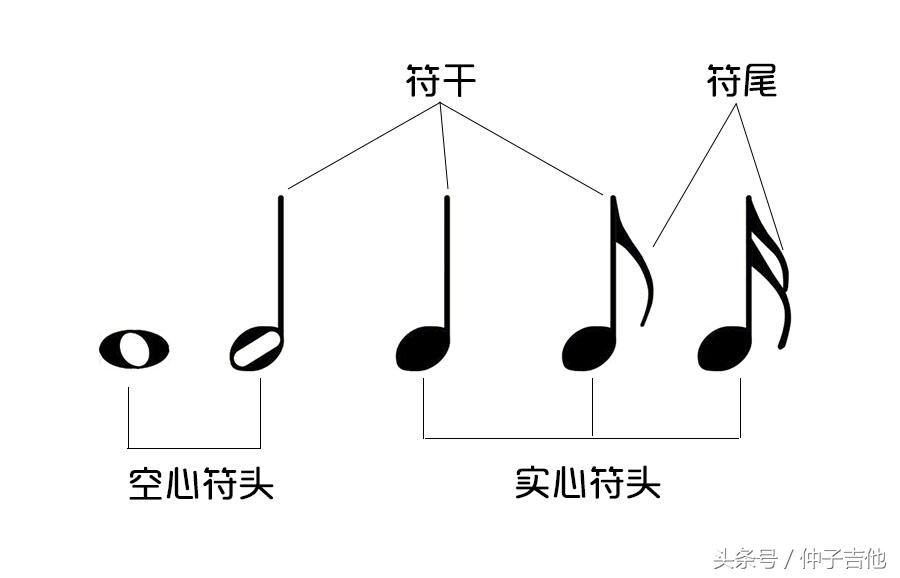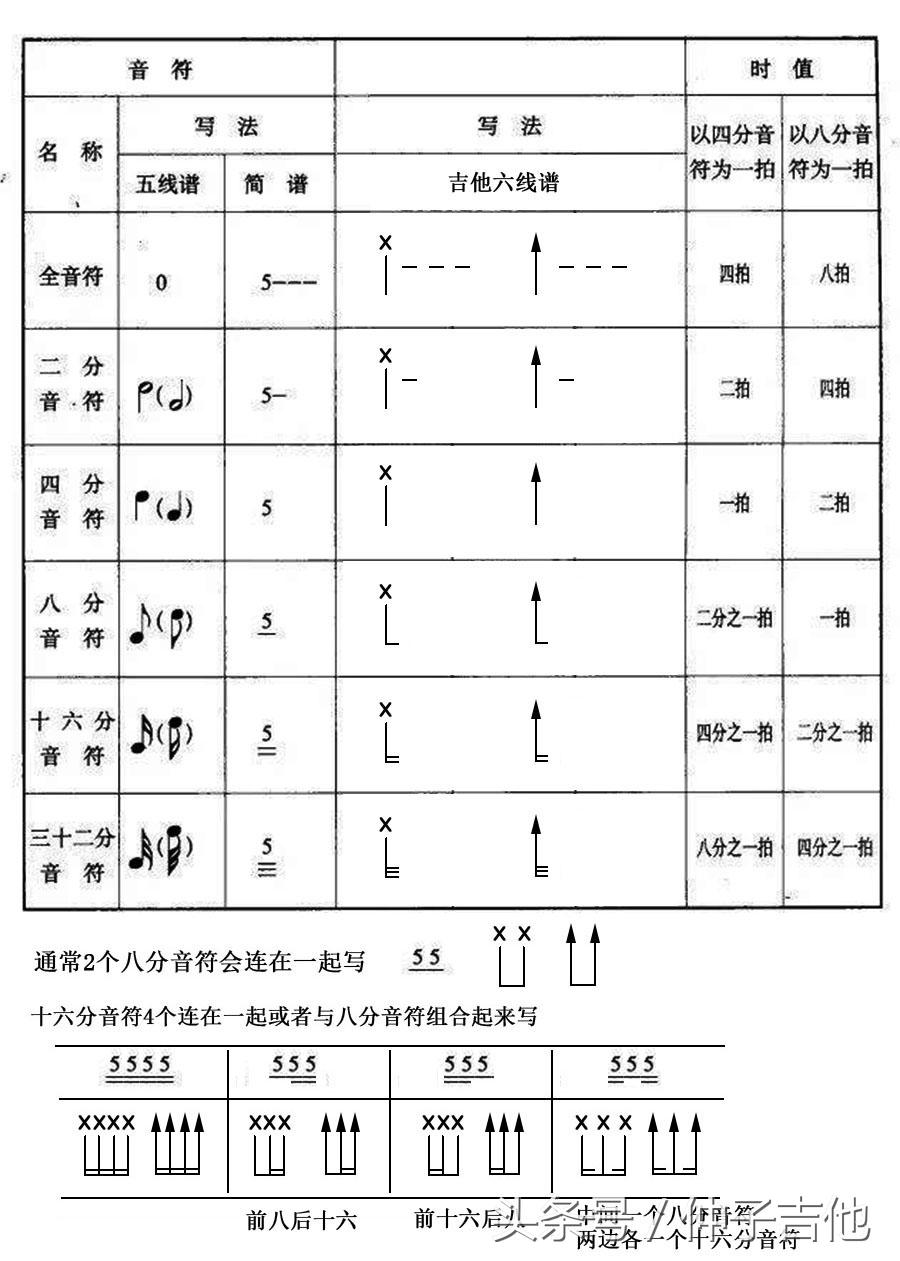The basic music theory and guitar application series allows everyone to easily learn a little bit of music theory knowledge each time, and gradually improve their musical literacy, which will better help us understand music and learn guitar!

1. The symbols in music scores that represent the pitch and length of sounds are called "notes"
Notes are composed of 3 parts, namely note head, stem and tail. The note heads include white note heads (hollow note heads) and black note heads (solid note heads); the stems can be upward or downward. The stems are written on the right side of the note heads when pointing upwards, and the stems are written on the left side of the note heads when going downwards. , symbol
Any situation is written on the right side of the stem and bent toward the head.

The picture below is a comparison table of commonly used note and rest durations, staff notation and abbreviated notation. The duration between two adjacent notes is 2:1, for example: 1 quarter note = 2 eighth notes; 1 eighth note = 2 16th notes

As can be seen from the picture above, in addition to whole notes and half notes, the staff and simplified musical notation are corresponding. The quarter-note staff has no symbols, so the simplified musical notation is represented by a number; the eighth-note staff has a symbol on the stem, and the simplified musical notation has a horizontal line under the number; the 16th-note staff has two symbols on the stem, and the simplified music is represented by a number. Add two horizontal lines under the number
It is also corresponding in the guitar six-line notation.

2. The symbol that indicates the stop of a sound in music score is called "rest"
The types, names, durations of rests correspond to the notes

Note: We find that full rests and dichotomous rests are very similar, but the marking positions are different. In staff notation, whole notes are written below the 4th line, and half notes are written above the 3rd line; in six-line notation, full rests are written below the 4th string, and half notes are written above the 3rd string.
3. Let’s take a look at how some notes and rests appear on guitar tabs.

Basic music theory and guitar application series, Section 1: Notes and rests. The following section introduces the note value increase marks, dotted notes with small dots, tie lines, and free extensions.
Articles are uploaded by users and are for non-commercial browsing only. Posted by: Lomu, please indicate the source: https://www.daogebangong.com/en/articles/detail/ji-ben-le-li-yu-ji-ta-yun-yong-xi-lie-di-1-jie-yin-fu-xiu-zhi-fu.html

 支付宝扫一扫
支付宝扫一扫 
评论列表(196条)
测试